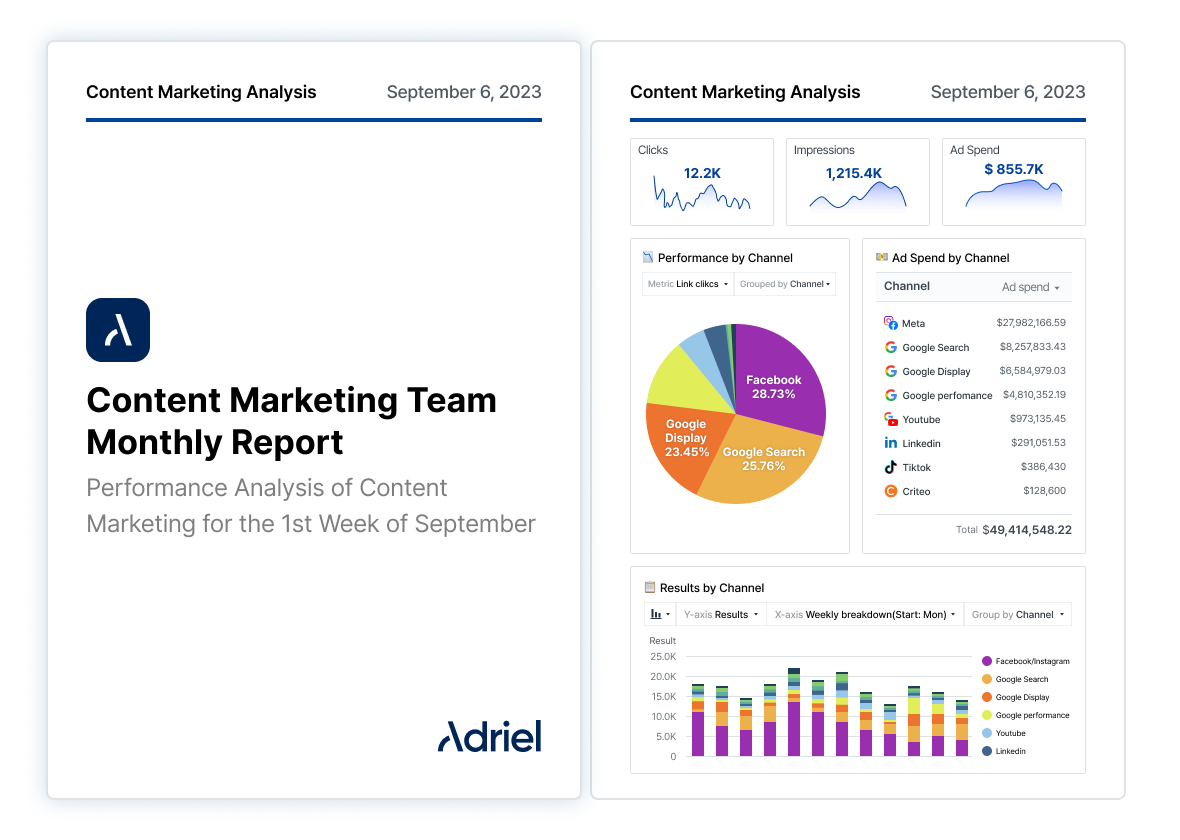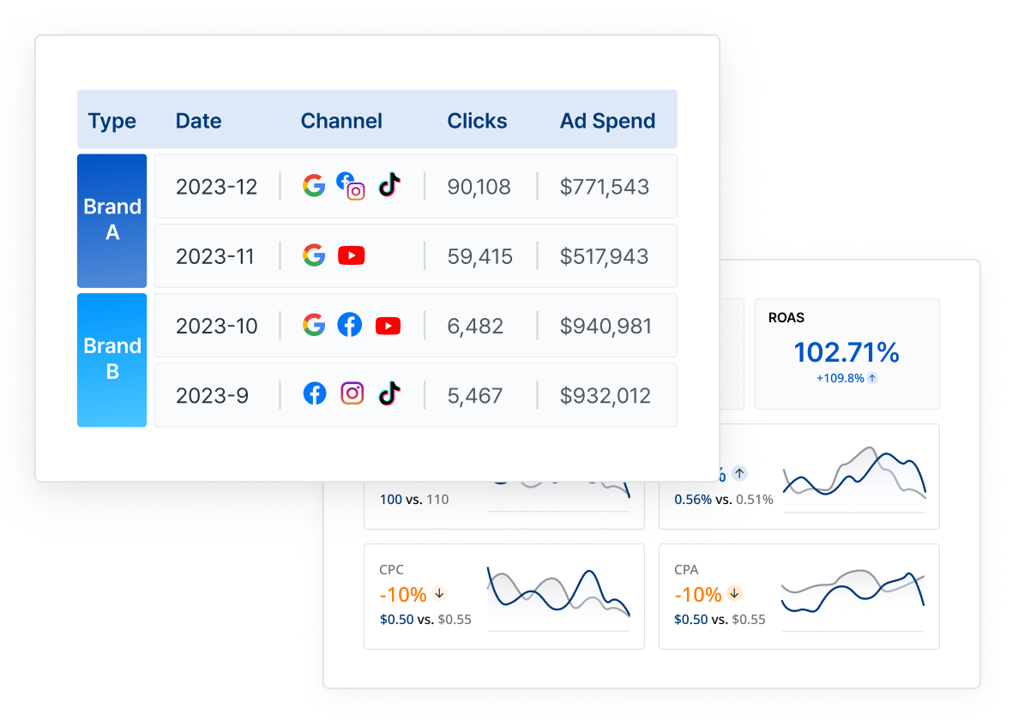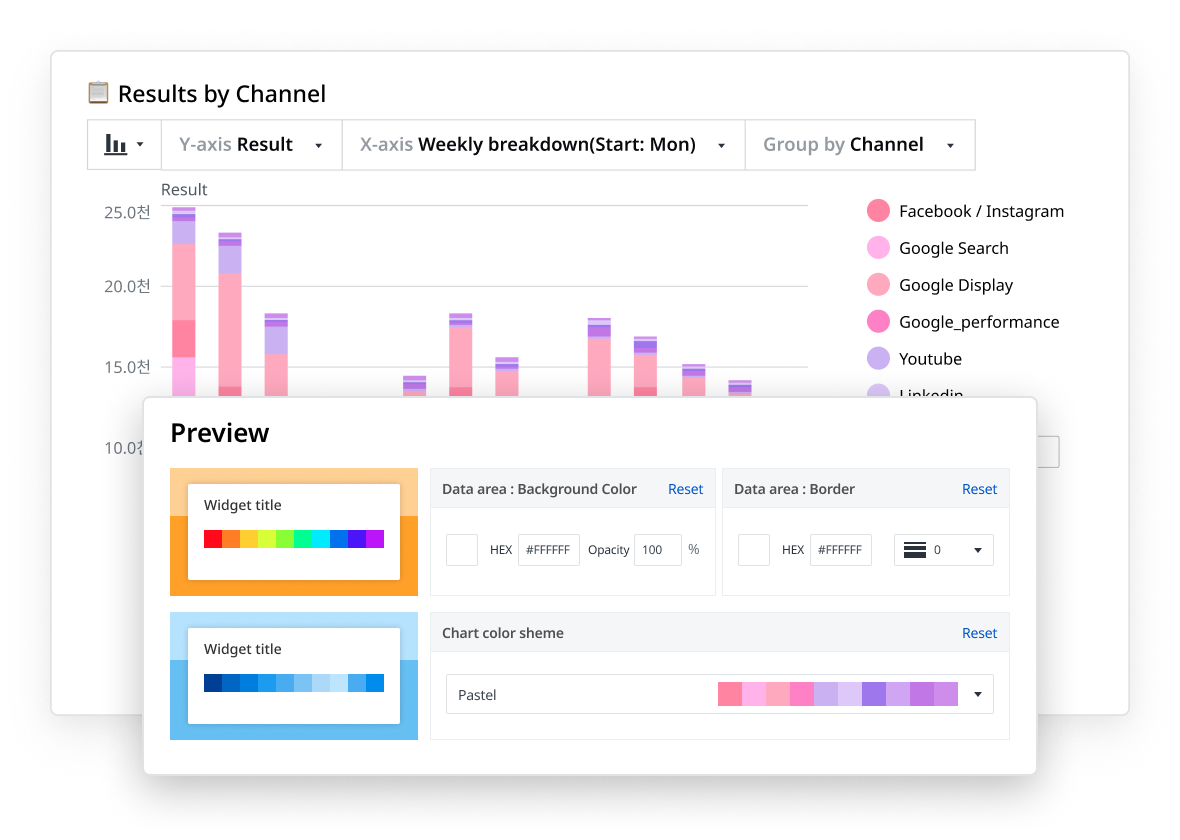Refer a partner and get paid! Earn 20% of all qualifying subscriptions referred to our team 👉

Learn More
Get a bird eye’s view of your Facebook page on an all-in-one marketing dashboard. Get unique insights to grow your page.



An external Facebook page dashboard provides a snapshot of your Facebook account growth and performance in real-time. Effortlessly track key metrics like engagement rate, page impressions, page views, page likes, and more, all on one dashboard.
Pace follower growth against a set goal and see how close you’re at reaching it. Drill down to each Facebook post and see what works and doesn’t. Get unique Facebook page insights for growth.
Creating a Facebook page dashboard is as easy as 1-2-3 with Adriel. You just need to choose your data source (i.e. Facebook) from a drop-down list and start using our ready-made template or customize your own dashboard with interactive widgets and graphs. No coding and technical knowledge required.

Sign up for Adriel with your email after your demo.
You can then select a pricing plan that suits your needs.

Adriel supports integrations with up to 650+ data sources, including social media channels, ad platforms, and eCommerce tools like:
And if you don’t see an integration that we support natively, we can create custom integrations just for you.

Use our ready-made templates to instantly see all your KPIs in minutes.
Or, start from a blank page and choose your data visualization widgets and graph types.

If you’re a marketing agency, you want to be able to present different sets of information to different stakeholders.
Set up different views for each role or client on Adriel with different access restrictions in just a few clicks.

Need paid media reports to share with clients or the C-suite team? Determine your brand visuals, colors, and client logos, and download reports as PDFs or CSVs or get live links in minutes.
To get a more accurate picture of your Facebook marketing strategy, track these metrics on an external dashboard like Adriel:




The number of individuals who have chosen to connect with your account.
Monitoring your follower count is crucial as it's a direct reflection of your brand's reach and the potential target audience for your content.


Post Likes measure the number of users who have liked a specific post.
It's a direct indicator of the content's appeal and resonance with your audience, reflecting their endorsement and appreciation.


Post Impressions count the total number of times your post has appeared on someone's feed or timeline, regardless of whether it was clicked.
By tracking this, you gauge the visibility and potential reach of your content within the platform.
Post Views represent the number of times a post has been actively viewed by users, indicating genuine interest.
This metric helps brands understand content consumption patterns and identify posts that truly capture attention.


Post Comments count the number of comments left by users on a specific post.
Monitoring this metric provides insights into the level of active engagement and conversation your content sparks, offering valuable feedback and potential areas for interaction.


Post Shares tally the number of times users have shared your post with their followers or on their timeline.
Shares amplify your content's reach organically, making it a critical metric to monitor for understanding virality and audience advocacy.


Video Views count the number of times your video content has been played for at least 3 seconds.
Monitoring this reveals the effectiveness of your video content and its ability to retain viewers.


Post Reach indicates the number of unique users who have seen a particular post from your Page.
It's vital to track this to gauge the visibility of your content and its potential to engage or convert users




When reporting Meta Ads, you will want to visualize Instagram Ads and Facebook Ads performance side-by-side to understand how each platform is contributing to your digital marketing goals. Here’s how it looks like on Adriel’s report template:





Integrate all your paid ad channels’ results into one marketing reporting dashboard. Curious to know how your Meta, Google, or TikTok Ads are performing? Connect all of these platforms to Adriel, and in less than 5 minutes, show all of your paid campaign results in one unified dashboard. See our integrations page for more information.


You can start from a blank page to create a facebook page reporting dashboard, but what if you don’t have time? Our extensive pre-made marketing reporting dashboard library has everything you might need. Try Adriel, and you’ll have more time to research ways to increase conversion or optimize your landing pages.
Our software was expertly designed with powerful functions for marketers. But everything can be customized. Adriel’s flexibility allows you to change all aspects of the dashboard design and appearance. Impress your clients or executives with a professional marketing reporting dashboard report for an expert brand image.













.png)

Adriel is an independent insights dashboard designed to visualize and analyze your Facebook Page's performance metrics.
While the native Facebook dashboard offers foundational insights, external dashboards like Adriel bring several distinct advantages:

A Facebook page dashboard tracks a brand’s organic presence on Facebook, capturing metrics like content engagement, audience growth, and overall page activity.
Whereas, a Facebook Ads dashboard zeroes in on the performance of paid ad campaigns, and includes metrics like ad spend, CTR, and conversion rates.
On Adriel, you can create both of these dashboards. Just connect your Facebook organic account and ad account to the platform and your data will start flowing within minutes! No coding or configuration required.
Grab a demo here.

